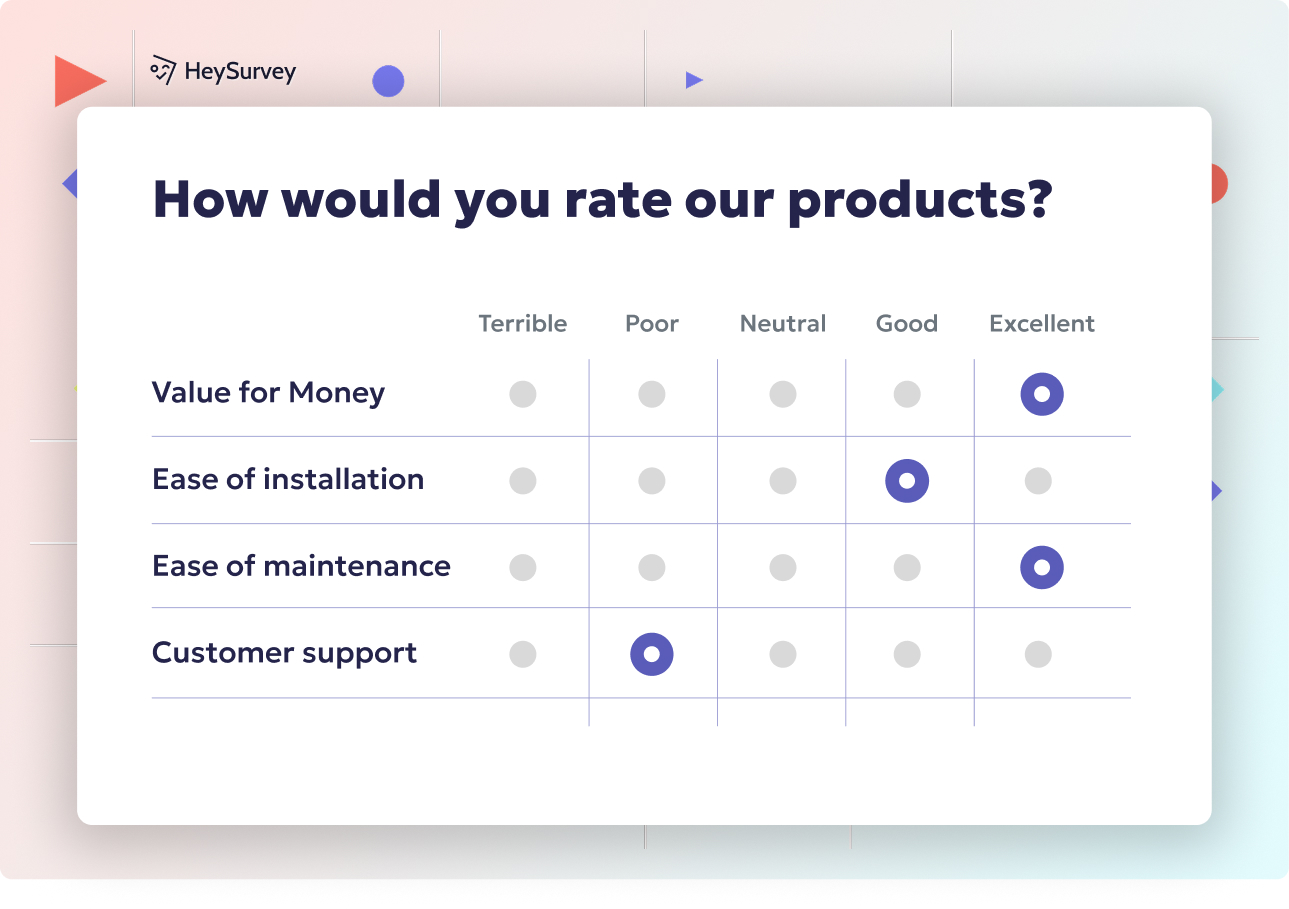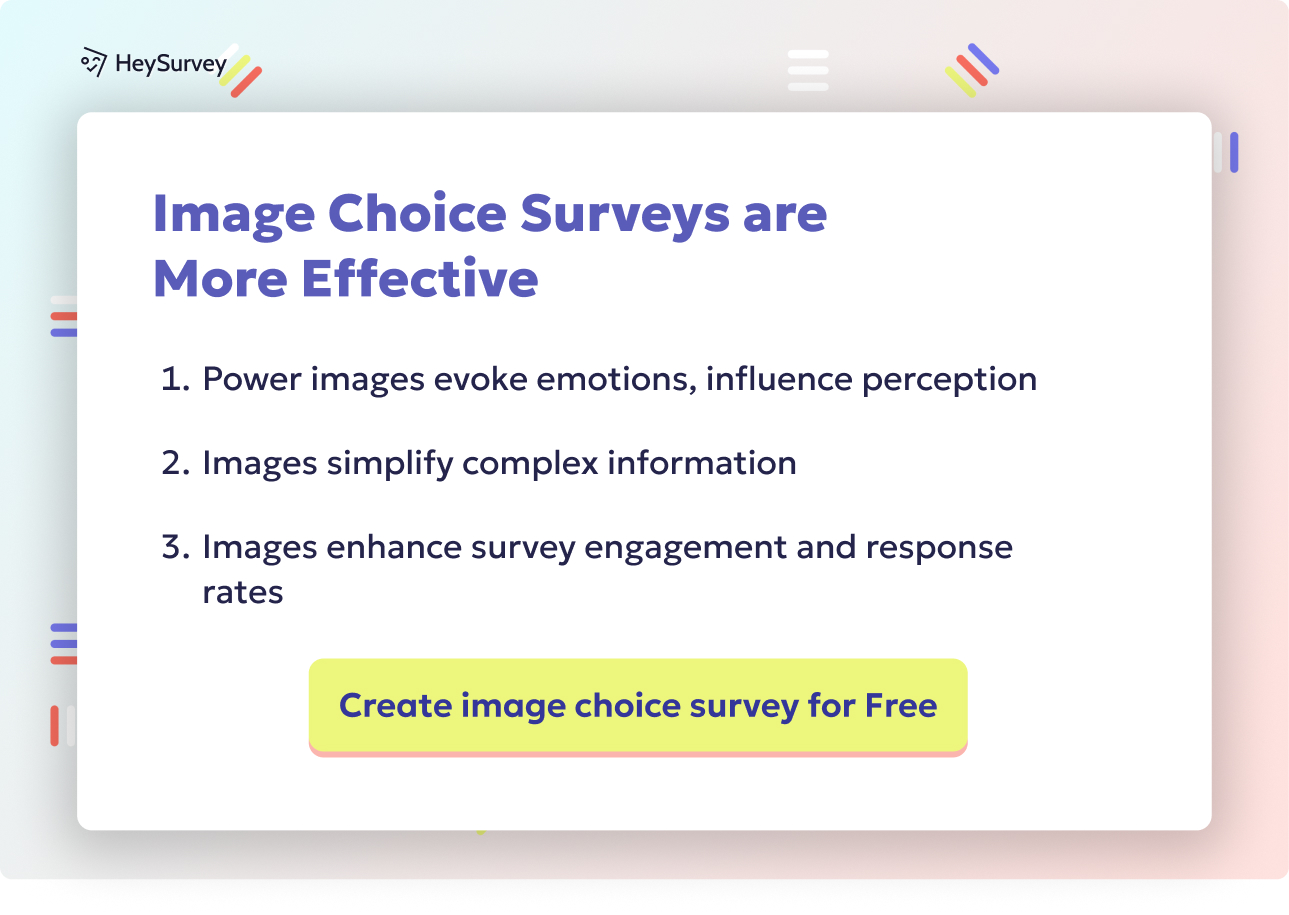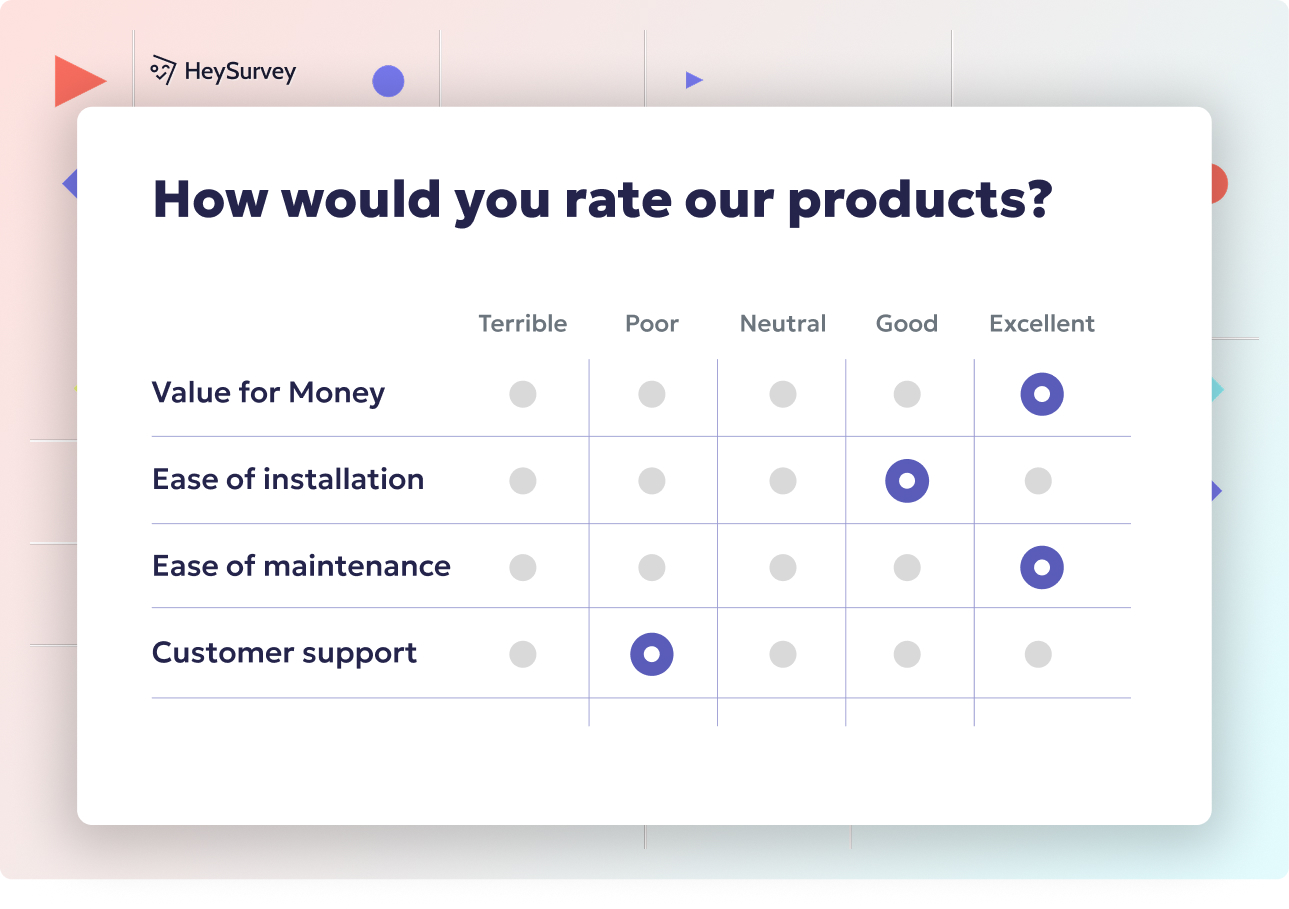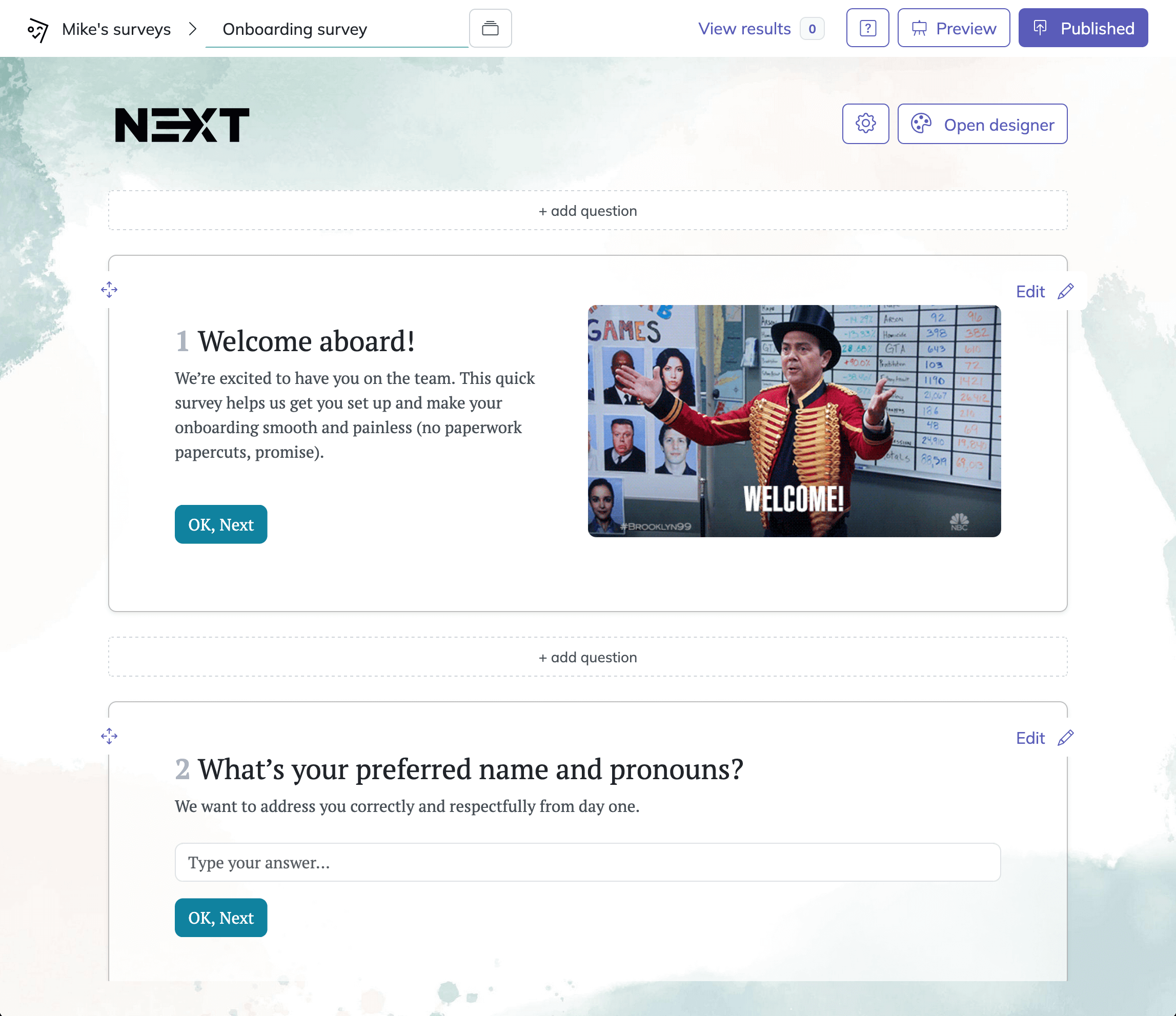32 Essential B2B Customer Satisfaction Survey Questions Guide
Explore 40+ expert B2B customer satisfaction survey questions with sample sets across 7 survey types to boost your B2B CX feedback.
B2B customer satisfaction surveys are not just another checkbox on your to-do list—they’re a vital barometer for your relationships. The stakes are higher, the sales cycles longer, and every account can have a chorus of stakeholders. The goals go beyond a simple happiness index: it’s about retention, growth, product alignment, and catching churn before it starts. Trigger these surveys after client onboarding, post-implementation, during quarterly checkups, and ahead of renewals, to keep your finger on the pulse. Let’s dig into the questions that fuel B2B CX feedback and reveal what your clients really think.
Likert Scale Satisfaction Survey
Why & when to use this type of survey
Likert scale B2B satisfaction surveys are perfect when you want clear, quantified data on how your clients rate multiple aspects of your service. Each touchpoint—be it onboarding, product support, or training—is open for evaluation, so you’ll spot what’s working and what needs a tune-up.
Use this type of survey when you need reliable benchmarking and want to track trends over time. It’s especially suitable for comparing different client segments or seeing how sentiment shifts after service improvements. Businesses often launch Likert scale surveys after implementations, at quarterly health checks, or anytime a deep-dive into experience metrics is due.
With their straightforward “rate your agreement” format, Likert questions break complicated experiences into bite-sized, measurable chunks. The real power lies in rolling up those responses to spot brand strengths—and red-flag the areas that need love.
Sample questions
- Our implementation process met your expectations.
- The quality of support you received was consistently high.
- Training resources provided were easy to understand and apply.
- Communication from our account team was clear and timely.
- Your feedback and concerns were acted upon promptly.
A study found that a 10-point Likert scale is more effective for measuring customer satisfaction and allows for better comparison across different scales. (tandfonline.com)

Creating your B2B customer satisfaction survey with HeySurvey is a breeze—even if you’re brand new to the platform. Follow these three easy steps to get your survey up and running in no time:
Step 1: Create a New Survey
Start by logging into HeySurvey or jump right in without an account (though you’ll need one to publish and track results). When you open HeySurvey, click “Create New Survey,” then choose your approach:
- Pick a pre-built template tailored for your survey type (e.g., Likert scale or NPS).
- Or, start fresh with an empty sheet if you want full control.
Give your survey a clear internal name to stay organized as you build.
Step 2: Add Questions
Next, it’s time to populate your survey with the right questions. Click “Add Question” and select the question type that fits your needs:
- For Likert scales, choose Scale and set the 5-point range.
- For NPS, select the NPS scale question type and add follow-up open text questions.
- For multiple choice or ranking, pick Choice or Ranking options.
Type your question text, add descriptions or instructions, and mark any questions as required if you want to ensure answers. Don’t forget you can spice up your questions with images or markdown formatting to keep respondents engaged!
Step 3: Publish Your Survey
Once your questions are set, hit the Preview button to see how your survey flows and looks on desktop or mobile. Make any last-minute tweaks with the Designer Sidebar to change colors, fonts, or layouts.
When everything’s perfect, click Publish. You’ll get a sharable link to send to your clients, embed on your website, or include in emails. Remember, you’ll need an account to publish and collect responses.
Bonus Steps for a Polished Survey Experience
Apply Branding
Make your survey unmistakably yours by uploading your company logo through the Branding panel. Customize colors and fonts in the Designer Sidebar to match your corporate look and feel.
Define Settings
Head to the Settings panel to configure survey availability dates, set response limits, or customize the post-survey redirect URL. You can also decide if respondents can view results—handy for transparent feedback loops.
Skip Into Branches
Want to deliver a smooth, personalized experience? Use branching logic to direct respondents down different paths based on their answers. This keeps the survey relevant and concise for each client type or role.
Ready to launch? Just click the button below to open a ready-to-use survey template and start customizing with HeySurvey today!
Net Promoter Score (NPS) Survey for B2B Clients
Why & when to use this type of survey
The Net Promoter Score for enterprise clients is the classic “would you recommend us?” test, but its power in a B2B world is multiplied by buying committees and long-term contracts. NPS gives you a snapshot of loyalty—or looming danger—at the account level.
Deploy a B2B NPS survey after a major milestone, like project completion or a Quarterly Business Review. It’s especially useful before renewal cycles, when you want to surface hidden dissatisfaction or tap satisfied clients for referrals.
What makes B2B NPS question examples extra useful? The follow-up questions that dig into the “why” behind the number. You’ll gather insight on not only what drives loyalty, but on what specific changes could bump you from an eight to a ten.
Sample questions
- On a scale of 0-10, how likely are you to recommend our company to a colleague or another business?
- What is the primary reason for your score?
- Which aspect of our product or service had the biggest impact on your likelihood to recommend us?
- What could we improve to earn a higher score from you in the future?
- Are there any recent experiences—positive or negative—that influenced your score?
In B2B contexts, the Net Promoter Score (NPS) often fails to capture the complexity of customer relationships, as it overlooks the diverse needs of multiple stakeholders and lacks actionable insights. (forbes.com)
Customer Effort Score (CES) Survey in a B2B Context
Why & when to use this type of survey
A B2B CES survey targets a specific question: How hard did you make it for your customer to get things done? CES questions are your fastest route to uncovering friction in client-facing support, implementation steps, or even basic portal use.
Fire off a CES survey right after a high-touchpoint service interaction. Whether a support ticket closes, a new feature goes live, or a client refers to your knowledge base, it’s the best moment to capture how smooth things felt—or where grumbles might be brewing.
You’ll get smarter at measuring effort to resolve issues. A lower effort score correlates with happier, more loyal clients. These insights drive changes that directly reduce churn and drive advocacy.
Sample questions
- How easy was it to resolve your issue with our support team?
- To what extent do you agree: “The implementation process was straightforward and hassle-free.”
- How much effort did you personally have to put forth to get the help you needed?
- Using our online portal to accomplish your task was simple and user-friendly.
- The resources provided adequately minimized the time needed to find answers.
Semantic Differential Survey
Why & when to use this type of survey
Semantic differential B2B surveys map the “vibe” of your brand or product by stretching feelings across bipolar adjectives. Here, respondents slide between two extremes—like “rigid” and “flexible”—giving you nuanced, fast-read insights on perception.
Trending before renewals or during rebranding, this tool helps you explore how your positioning lands with key accounts. Feedback can guide communications, update sales messaging, or validate marketing strategies.
Brand perception survey questions go beyond satisfaction. They help you spot subtle but strategic differences between competitor perceptions or shifts over time—critical for B2B decision-making.
Sample questions
- Our platform feels: Innovative –––– Old-fashioned
- Communication from our team is: Transparent –––– Opaque
- Our solutions are: Flexible –––– Rigid
- Working with us is: Effortless –––– Complicated
- Our service delivery is: Proactive –––– Reactive
Semantic differential scales are effective in measuring B2B customer satisfaction, providing nuanced insights into brand perception and guiding strategic decisions. (questionpro.com)
Attribute Importance & Satisfaction Checklist (Multiple Choice)
Why & when to use this type of survey
Attribute checklist surveys shine when you want to know which features your clients value most—versus those that could use extra work. This method is a staple for importance vs satisfaction B2B insights, feeding directly into your product roadmap.
Best deployed in quarterly product loops, these surveys give specific, actionable feedback about what really matters to your audience—analytics, integrations, scalability, and more. This helps prioritize development resources and fosters collaborative innovation.
By letting respondents select and rate multiple features or capabilities, you sidestep broad-brush feedback and get to the heart of what keeps clients coming back (or looking elsewhere).
Sample questions
- Please indicate which attributes are most important to your business: [Analytics, Integrations, Scalability, Security, Customer Support]
- For each selected attribute, how satisfied are you with our current offering?
- Rank the importance of the following features to your daily operations.
- Which existing features exceed your expectations?
- Are there any features missing that would drastically improve your experience?
Ranking Order Survey
Why & when to use this type of survey
The B2B ranking survey question style is a powerful way to force choices and reveal real priorities. When you only let clients pick what matters most, you expose the trade-offs underlying every business relationship.
Ranking surveys are ideal when you’re budget planning, aligning product investments, or need to prioritize features. Instead of “everything is important,” you see which requests actually rise to the top—cutting through the noise.
Not only does this technique highlight your winning differentiators, but it gives you evidence for resource allocation in internal debates. It’s a shortcut to a product roadmap that really matches your customers’ needs.
Sample questions
- Please rank the following features in order of importance to your business: [Data Security, Custom Integrations, Analytics, Support Availability, Pricing Flexibility]
- Arrange these support channels by preference: [Phone, Email, Live Chat, Dedicated Account Manager, Online Portal]
- Which aspects of our service would you most like to see improved? Please rank.
- Prioritize these pricing models for your organization’s budgeting needs.
- What enhancements would add the most value to your daily use of our platform? List from most to least important.
Open-Ended Qualitative Feedback Survey
Why & when to use this type of survey
There’s nothing like open-ended B2B survey questions for depth—these invite clients to “think aloud,” giving you access to unfiltered ideas and pain points. They’re invaluable for surfacing surprise insights that quantitative surveys might miss.
Deploy these after closed-ended surveys or when digging into fresh problem spaces. This format is especially potent for qualitative customer feedback, innovation sessions, or mapping the full customer journey.
Clients relish the chance to tell their story, and you get the bonus of potent testimonials or cautionary tales to drive internal change. The toughest part? Sifting the gold out of the nuanced, messy responses—but it’s always worth it.
Sample questions
- Describe a time when our product or service exceeded your expectations.
- What is the one thing you would change about your experience with us?
- Share a specific challenge you faced while working with our team, and how it was resolved.
- If you could wave a magic wand and add any feature or capability, what would it be?
- Tell us about a moment we could have better supported your business goals.
Best Practices: Dos and Don’ts for B2B Customer Satisfaction Surveys
Dos
Every successful B2B client survey hinges on a handful of high-impact strategies. The most important? Personalize by job role or stakeholder type. Not all feedback is created equal—your champions and your end-users see things differently.
For maximum impact:
- Keep your surveys short and sweet—don’t let your survey become an epic saga.
- Close the feedback loop by acknowledging every response and sharing follow-up actions.
- Segment your outreach and questions by account tier, use case, or vertical for more relevant insights.
Don’ts
On the flip side, some mistakes can tank your whole effort. Never, ever ignore non-responders—their silence may signal deeper issues than you think.
Key traps to avoid:
- Don’t mix rating scales from question to question; consistency boosts completion rate and data quality.
- Avoid launching surveys during service crises, when emotions run high and data can be skewed.
- Don’t flood your main contacts (gatekeepers) with too many requests—pick your moments.
Bonus tips
For the cherry on top, deploy a mix of these tactics:
- Set an optimal survey cadence—quarterly works for most, but consider event-triggered surveys for key touchpoints.
- Offer incentives thoughtfully, especially for time-pressed decision-makers in enterprise accounts.
- Support global clients with multi-language surveys for inclusivity and higher response rates.
- Use your CRM and marketing automation systems to segment, target, and track outreach with precision.
Conclusion: Turning Survey Insights into Actionable Strategies
Smart B2B customer satisfaction surveys do more than just gather feedback—they equip you to retain, expand, and delight clients. With the right questions and timing, your data transforms into visual dashboards and compelling presentations for top stakeholders. Connect insights to action, building continuous improvement loops that keep customers in your court. Now’s the perfect moment to craft your own survey, using these strategies as your go-to guide. Ready to listen, learn, and lead?
Related Customer Survey Surveys

28 Restaurant Survey Questions to Boost Guest Satisfaction
Discover 28 insightful restaurant survey questions to improve guest experience, boost loyalty, an...

31 Interior Design Survey Questions: Types, Use & Examples
Discover 28 expert interior design survey questions covering preferences, style, budget, and more...

31 Essential Help Desk Survey Questions to Boost Support Success
Discover 30+ effective help desk survey questions with detailed examples to boost IT support feed...

